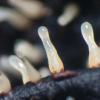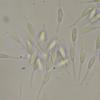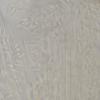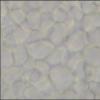
20-12-2025 23:08
Patrice TANCHAUDBonsoir, récolte sur sol sablonneux dans l'arri�

20-12-2025 15:47
Mirek GrycHi.These grew on pine wood that was heavily covere

18-12-2025 21:17
Pol DebaenstThe identification took me to Byssonectria deformi

15-12-2025 07:09
 Danny Newman
Danny Newman
indet. Rutstroemiaceae sp. on unk. fallen leavesMc

19-12-2025 10:10
Patrice TANCHAUDBonjour, récolte réalisée en milieu dunaire, a

18-12-2025 17:23
 Bruno Coué
Bruno Coué
Bonjour,je serais heureux d'avoir votre avis sur c

18-12-2025 18:07
Margot en Geert VullingsThese plumes were found on rotten wood.They strong

17-12-2025 18:35
 Michel Hairaud
Michel Hairaud
Bonjour à tous/Hi to everyone I am passing along
Synnemata on Russula
Alain GARDIENNET,
04-10-2017 20:05
Hi forum,
I can't identify this hyphomycete on old black Russula.
White synnemata less than 1mm, with subglobose conidial mass, producing ciliate hyalin aseptate conidia, 6-7 x 2 µm, with 4-11 µm long appendages .
Alain
Jason Karakehian,
04-10-2017 20:43
Re : Synnemata on Russula
Those are some really good photos. I wonder though if they aren't pycnidia? It looks like the masses of conidia are emerging from a peridium of hyaline tissue?
Jacques Fournier,
05-10-2017 10:07

Re : Synnemata on Russula
salut Alain,
je pense que Jason a raison. Un synnema est porté par un stipe, souvent long, constitué d'hyphes en palissade qui se différencient en cellules conidiogènes au sommet.
Il faudrait voir aussi à quoi ressemblent les cellules conidiogènes, qui se trouvent peut-être à la base de la pycnide.
Une coupe longitudinale de la pycnide s'impose! ça t'apprendra à lorgner les Russules!
Amuse toi bien,
Jacques
je pense que Jason a raison. Un synnema est porté par un stipe, souvent long, constitué d'hyphes en palissade qui se différencient en cellules conidiogènes au sommet.
Il faudrait voir aussi à quoi ressemblent les cellules conidiogènes, qui se trouvent peut-être à la base de la pycnide.
Une coupe longitudinale de la pycnide s'impose! ça t'apprendra à lorgner les Russules!
Amuse toi bien,
Jacques
Jason Karakehian,
05-10-2017 14:39
Re : Synnemata on Russula
Yes. Determining what type of conidiomata you have will direct you to literature specific to that type. For instance, when we have pycnidia or acervuli we can turn to Sutton's The Coelomycetes. Fungi imperfecti with pycnidia, acervuli and stromata. 1980. Best - J
Alain GARDIENNET,
06-10-2017 07:32
Spooren Marco,
08-10-2017 11:35
Re : Synnemata on Russula
Hello Alain,
I do not have a speciesname for you,but the synnemateous fungi, the genera, are nice3ly discribed in "Genera of hyphomycetes ", from Seifert and Gams and so.
Best,
Marco
I do not have a speciesname for you,but the synnemateous fungi, the genera, are nice3ly discribed in "Genera of hyphomycetes ", from Seifert and Gams and so.
Best,
Marco
Hermann Voglmayr,
09-10-2017 18:07
Re : Synnemata on Russula
Hi Alain,
look at Eleutheromyces subulatus. Grows, amongst others, on Russula and blackens the basidiomata.
Cheers,
Hermann
look at Eleutheromyces subulatus. Grows, amongst others, on Russula and blackens the basidiomata.
Cheers,
Hermann




